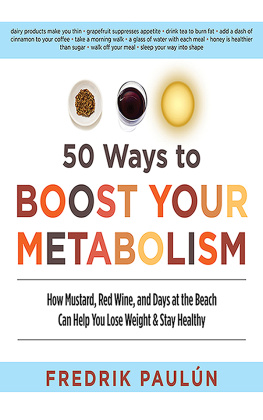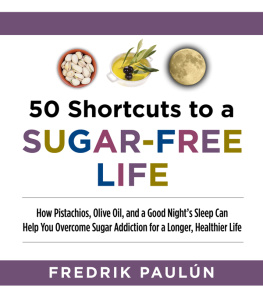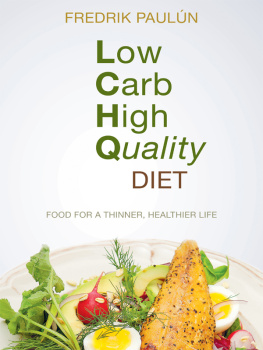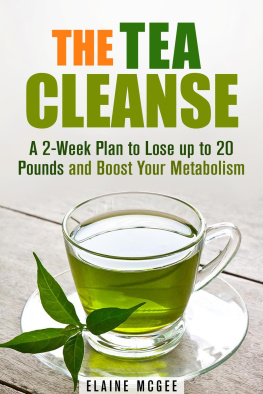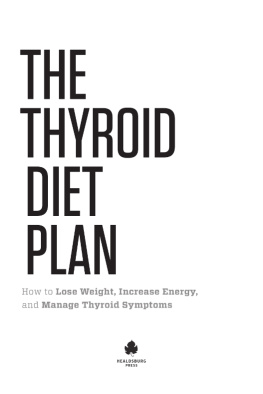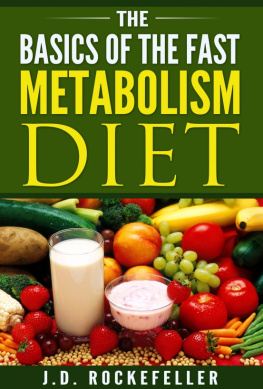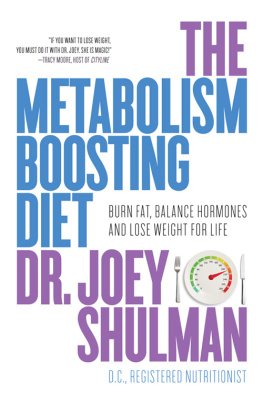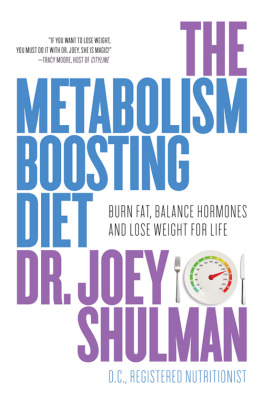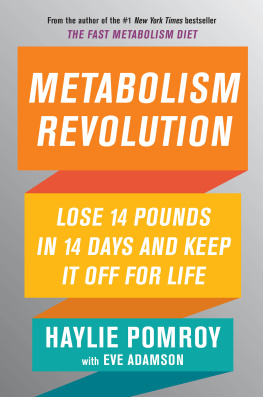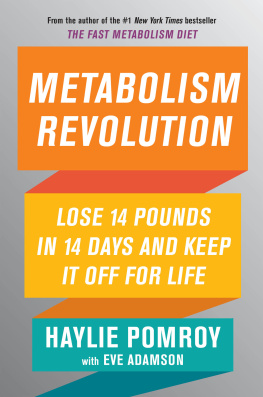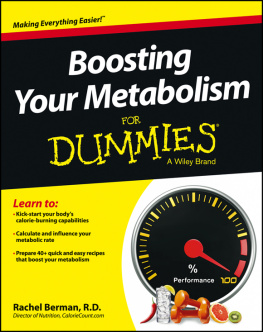
Copyright 2011 by Fredrik Pauln
English Translation 2013 by Skyhorse Publishing
First published in 2011 as 50 genvgar till fettfrbrnning by Fredrik Pauln, Fitnessfrlaget Stockholm, Sweden
Graphic design Patrik Granquist Photos Shutterstock
All Rights Reserved. No part of this book may be reproduced in any manner without the express written consent of the publisher, except in the case of brief excerpts in critical reviews or articles. All inquiries should be addressed to Skyhorse Publishing, 307 West 36th Street, 11th Floor, New York, NY 10018.
Skyhorse Publishing books may be purchased in bulk at special discounts for sales promotion, corporate gifts, fund-raising, or educational purposes. Special editions can also be created to specifications. For details, contact the Special Sales Department, Skyhorse Publishing, 307 West 36th Street, 11th Floor, New York, NY 10018 or info@skyhorsepublishing.com.
Skyhorse and Skyhorse Publishing are registered trademarks of Skyhorse Publishing, Inc., a Delaware corporation.
www.skyhorsepublishing.com
10 9 8 7 6 5 4 3 2 1
Library of Congress Cataloging-in-Publication Data is available on file.
ISBN: 978-1-61608-449-3
Printed in China
Contents
Introduction
Lets Start at the Beginning
Youre holding a book filled with easy-to-follow hints to boost your metabolism and improve your ability to burn fat. My shortcuts are perfect for anyone who wants to reduce body fat or learn how to enhance the effect of his or her current diet. These tips boost all diets, but you dont need to be on a diet to experience the benefits of this book!
All of the advice in the following pages is based on the latest scientific research. The numbers that appear in parentheses throughout the text refer to scientific studies that demonstrate the points I make.
These shortcuts work for several reasons. They might increase your metabolism, slow down the uptake of calories (or even reduce them), or increase the rate at which you burn fat. But the results are always the same: They reduce the bodys tendency to store fat. So, choose the tips that work for your body and your lifestyle. The more you embrace them, the better the effects.
In essence, losing weight is about burning more calories than you consume. But thats not allyou must have a good metabolism because its fat that you want to lose, not muscle. The ways to get a quick metabolism can vary in practice, but the easiest and healthiest is to increase the rate at which you expend energy, rather than dramatically reducing your food intake. A slight decrease in your energy intake is fine, but if you dip too low, your body will respond by reducing the basal metabolic rate, meaning you will lose too much muscle.

What Determines Metabolism?
What is it that determines how much energy you use? Some would guess that it has to do with age, sex, weight, height, and so on. But in truth, these arent determining factors. Heavier people do tend to use up more energy, but there are other factors that rule first and foremost.
Basal Energy Expenditure
Basal energy expenditure is the basic energy usage required to stay alive, even when at complete rest. Even if you are lying completely still, staring only at the ceiling, your heart, lungs, and cells still need energy. The cells, for example, pump salt back and forth; this action goes completely unnoticed by you, but you would die if it ceased, and this action takes energy.
The amount of the basal energy expenditure varies somewhat, but it is generally between 1100-1300 kcal a day. It can sink with starvation and diet, but basal energy expenditure rarely goes below 800 kcal per day.
kcal = kilocalories, but these are usually known as "calories," which is the term used in this book.
Physical Activity
As you might have guessed, this is about the work that your muscles do. It can be anything from playing computer games to running, and even the smallest effortsuch as getting out of bedcounts. So it comes as no surprise that it is this part of energy expenditure that varies the most between individuals. It can range from zero or a few hundred kcal for a physically disabled person to up to 5000 kcal for a super endurance athlete. So, for anyone who wants to lose weight, this is a good place to start. There is a lot here that you yourself can influence, and each little effort counts; this is why day-to-day exercise is so important. If you take the stairs instead of the elevator, park the car a ten-minute walk from your workplace, or even stand rather than sit on the bus, you will easily burn an extra hundred calories a day. Over a year, that adds up to 36,500 kcalabout the same amount of energy as is contained in 11 lb (5 kg) of body fat.
Heat Production
Producing heat is a necessity for all warm-blooded creatures because we need to keep our body temperature up. The production of heatthermogenesisis so vital that it is constantly working, even coping with regulating body temperature during cold weather. So, despite many suggestions to the contrary, cold weather doesnt normally increase metabolism.
Its only when its so cold that you start to shiver that the production of heat actually increases. Shivering is a result of the muscles contracting and relaxing, and this involuntary movement heats the body. After a longer period of cold (which is unhealthy because it increases the risk of disease-causing viruses and bacteria), the body can maintain increased production of heat more constantly because your brown fat increases its energy consumption. Brown fat can be found in the upper parts of the breast and neck area, and its main task is to produce heat. It gets its name from the color created by the large amounts of mitochondria (known as the power station of the cells) as they convert fat to heat.
Warm weather, on the other hand, can raise the basal energy expenditure by up to 10 percent because the heart has to work harder, and superficial blood vessels need to dilate in order for heat to leave the body.
One type of thermogenesis known as mealtime induced thermogenesis is the increase of body temperature that occurs after a meal. This occurs in part due to the actual digestion of food and partly because of metabolism. Storage is a third reason because as energy is required to store carbohydrates in the form of glucose. Tests have shown that on average 0-3 percent of the energy contained in fat evaporates after a meal. Compare this to 5-10 percent for carbohydrates, or as much as 20-30 percent for proteins, so there really is a difference among the nutrients.
People with a lowered sensitivity to insulin tend to have a lower temperature increase, which can affect weight. For example, if the metabolism is reduced by 150 kcal per day, this is equal to the energy contained in around 16 lb (7.5 kg) of body fat in a year.
Growth
Growth is the third aspect of energy expenditurefor those who are growing, that is. This includes children, pregnant women, athletes who are building muscle, and those who are gaining weight. This is the energy that remains after you have covered your basal need, your physical activity, and your heat production, and it goes to weight gain. If you increase your physical activity (e.g., by taking daily walks), or your heat production (by a generous consumption of strong spices), less will go to growth, and you will be better able to maintain your weight.
Next page
